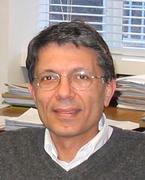
Prof Ali Madanipour
Professor of Urban Design
Newcastle University
Title: Social justice and public space
Can public spaces be a response to social fragmentation, segregation and exclusion? How far can these urban nodes contribute to social and spatial justice? In the context of centrifugal forces that split societies apart, the idea of public space is advocated as a catalyst for bringing the fragmented pieces together. This presentation will analyse the political, economic and cultural aspects of the conditions of social fragmentation and the potentials and limitations of public spaces for confronting them. It will critically discuss the multivalent roles that they play in the processes of urban change.
Ali Madanipour is Professor of Urban Design at the School of Architecture, Planning and Landscape, Newcastle University, and has been affiliated with the AESOP thematic group on Public Space and Urban Cultures from its inception.
Prof. Ali Madanipour has studied (MArch, PhD), practised, researched, and taught architecture, urban design and planning, winning design and research awards, and working with academic and municipal partners from around the world. His work has been translated into French, German, Italian, Japanese, Mandarin, Persian and Spanish. His visiting positions include the City of Vienna Senior Visiting Professor at the Technical University of Vienna (2010), the Wits-Claude Leon Distinguished Scholar at the University of Witwatersrand, Johannesburg (2011), and Visiting Professor at the Polytechnic of Milan (2015).
Prof. Madanipour’s research interests include the design, development and management of cities, in particular research into: the urban space, its social and psychological significance, processes that shape it, agencies of urban change, and implications of change for disadvantaged social groups and the environment. Published books include among many others: Cities in Time: Temporary Urbanism and the Future of Cities (2017, Bloomsbury); Handbook of Planning Theory (2017, co-ed, Routledge); Reconsidering Localism (2015, co-ed, Routledge);Urban Design, Space and Society (2014, Palgrave-Macmillan); Public Space and the Challenges of Urban Transformation in Europe (2014, co-ed, Routledge).

Prof Wendy Pullan
Professor of Architectural and Urban Studies
Clare College (Fellow)
University of Cambridge
Title: Justice as everyday life: Urban conflict and civic space
Wendy Pullan is Professor of Architecture and Urban Studies at the University of Cambridge where she was Head of the Department of Architecture 2014-17. She is currently Director of the Centre for Urban Conflicts Research. Professor Pullan was Principal Investigator for 'Conflict in Cities and the Contested State’, a ten year international and multidisciplinary research project funded by the Large Grants Programme of the Economic and Social Research Council of the UK. The Royal Institute of British Architects‘ inaugural President’s Award for Research was awarded to her for work on Conflict in Cities. She has published widely on European and Middle Eastern architecture and cities, examining the processes of urban heritage, conflict and change, both historical and contemporary. Her recent publications include: Locating Urban Conflicts (2013), The Struggle for Jerusalem’s Holy Places (2013), Architecture and Pilgrimage 1000-1500: Southern Europe and Beyond (2013). She is a Fellow of Clare College, Cambridge. Further details: www.urbanconflicts.arct.cam.ac.uk.
Can we speak of spaces of justice? If so, how and where might this happen in contemporary cities? The abstraction of legal systems makes it difficult to apply them to everyday life in cities, resulting in disjunctures between urban practice and justice. This becomes more complicated when political situations begin to unravel in conditions of heavy conflict. Nonetheless, cities are often more robust that we initially expect and the order and processes of everyday life often contribute and sustain when more formal procedures become feeble. I shall consider these problems and possibilities in the physical space of cities, particularly focusing on two prominent and problematic sites: Damascus Gate in Jerusalem and Martyrs Square in Beirut.
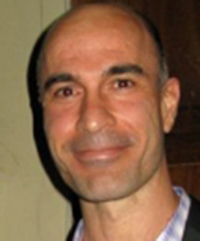
Professor Mustafa Dikeç
Professor of Urban Studies
Ecole d’Urbanisme de Paris and LATTS
Title: Exposing injustices: urban uprisings and liberal democracies
Mustafa Dikeç is Professor of Urban Studies at the Ecole d’Urbanisme de Paris and LATTS, Université Paris-Est, and visiting professor at Malmö University. His most recent book, Urban Rage, is published by Yale University Press in 2017. He is also the author of Space, Politics and Aesthetics (Edinburgh University Press, 2015) and Badlands of the Republic: Space, Politics and Urban Policy (Blackwell, 2007). He is one of the editors of International Journal of Urban and Regional Research (IJURR).
Urban uprisings have become increasingly common and intense since the turn of the century, making this so-called urban age an era of urban rage as well. What are the processes at the source of this rage? What kinds of injustices do urban uprisings expose? Could rioting be a call for a more just city? This talk is organised around these questions with examples from contemporary uprisings in liberal democracies.
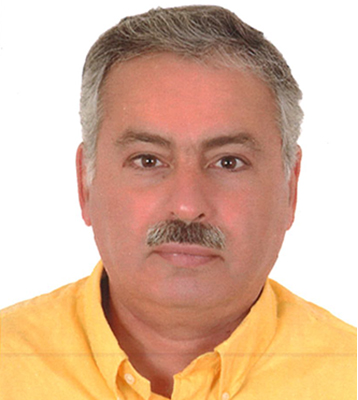
Tarek Osseiran
UN-Habitat Lebanon
Title:The Urbanization of In (justice) – Theories versus realities
- Tarek Osseiran, Master Degree in Civil Engineering, UN-Habitat-Lebanon Country Programme Manager since January 2013.
- Over 25 years of extensive experience in the fields of local governance, urban, social and community development, gained through working with different Int’l and UN agencies, mainly with UNDP the World Bank, and UN-Habitat.
- Certified trainer on Participatory Assessment tools and techniques, Governance, Project Management, & others.
- Part time Teaching Instructor to master studies students at the University of Saint Joseph on “Partnership Strategies” and “Project Development”.
Urbanization seems to be continuing to rapidly increase worldwide. With the advanced technologies, access to internet and social media, in addition to the increasing conflicts, geographic borders are diminishing and the whole world is becoming reachable and accessible to all people, mainly youth. However, while urbanization in developed countries is seen as an opportunity for enhanced economy and improved livelihoods, in the underdeveloped and third world countries urbanization is a main factor of increased poverty, extended slums, exacerbated social divide, and acute injustice.
While the international community has been rigorously trying to introduce innovative inclusive concepts, participatory methods and resiliency frameworks that could help governments and the civil society to overcome the implications of urbanization, geo-politics, and socio-cultural affiliations seem to set the rules of justice and injustice societies.
UN-Habitat has been trying to promote public spaces as a tool for social cohesion, reducing tension, and community bonding in the most vulnerable neighborhoods of the Lebanese cities. However, aspirations, perceptions, and pre-judgements have proved to unlikely work as desired. Social habits and traditions, discrimination and ethnicity have imposing the scene.
The presentation will highlight the facts and realities that lead to the urbanization of injustice, and will propose practical evident-based actions that will help to achieve urbanization of justice.
CyNUM 2018 – Speakers

Dr. Kayvan Karimi
Senior Lecturer
Bartlett School of Architecture
Title: Tackling the Challenges of Urban Conservation: an evidence-informed spatial network approach
Historic cities are confronted with the relentless challenge of how to preserve the urban heritage and maintain the physical integrity of the historic centres, while make them work as an integral part of the greater functional city. This challenge is particularly more relevant to older cities, in which the greater city has expanded well beyond an organically-evolved historic centre, but has been impacted by rapid urbanisation in the modern era. The customary urban planning and design practice is to declare the historic centre as a special zone and provide specific guidelines for it. Such guidelines not only tend to be detached from the impacts imposed by the larger city, but are thought predominantly as zone-based, internally-focused solutions. It is proposed that the most efficient approach to urban conservation can be achieved through a system of analysis that can explore the historic centres in the context of the whole city. It is also argued that such an approach is more productive if the adopted methodology is informed by spatial network analysis at various scales. Through the analysis of the spatial network the true morphological structure of the city can be revealed and linked with the movement and functional infrastructures. This framework will enable the urban conservation process to become an evidence-informed, integrated urban planning, urban design and decision-making approach.
Dr. Kayvan Karimi is a Senior Lecturer within Space Syntax Laboratory at the Bartlett School of Architecture, UCL, and the Course Director of MRes in Space Syntax: Architecture and Cities (MRes SSAC). He is also the Director of Space Syntax Limited, a UCL knowledge-tranfer company that utilises Bartlett’s research in professional consultancy. Kayvan is an architectural and urban designer with more than twenty years of academic and professional experience. His academic and professional experience spans from the East, where he originates, to the West, where he has spent most of his academic and professional life. He has worked extensively on a wide range of research and consultancy projects, including: strategic city planning, urban regeneration, large-scale urban master planning, urban conservation, revitalisation of historic centres, regeneration of informal settlements, complex buildings, public realm design and pedestrian movement planning. In recent years, Kayvan has been developing advanced methods for evidence-based design and planning of the built environment, from a very macro scale, such as master planning of an entire city, to very micro scale, such as the design of small public spaces or buildings. Kayvan has maintained his teaching and research activities in parallel to his main role in leading consultancy projects. He has become a senior lecturer at the Bartlett School of Architecture, UCL, since January 2011, and established the new master course, MRes SSAC in 2013.
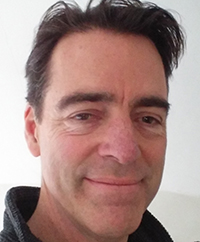
Dr. Karl Kropf
Senior Lecturer
Oxford Brookes University
Title: Looking for sources: diversity and the sense of a region
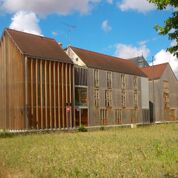
The intertwining social and physical diversity of cities is an inexhaustible realm for exploration and investigation. Every walk down a street or look at a map provides an opportunity to find something different. Paradoxically, that same walk or look at the map has the potential to reveal as many similarities. Even while we come across individuals – distinctive streets and buildings - we also find family resemblances. Depending on how far one might wander, the similarities might be more generic and abstract – for wider areas - or specific and tangible – as one narrows down one's view. We might then ask, what is the balance that gives us the sense of a region such as the South-Eastern Mediterranean? In many ways, that paradoxical mix of similarities and differences is the subject of urban morphology. We seek to understand the multiplicity of diversity by looking for common processes of diversification.
Probably the most well known of these is the typological process as put forward and developed by Muratori, Caniggia and Maffei, Cataldi and others. One of the beauties of the idea is that, while inextricably rooted in the evidence of building practice, it can also be seen as an example of a more general process of diversification and complex adaptive system. From this perspective the typological process provides a general tool for investigation – for both research and applications in practice - into similarities and differences that result in the richness and diversity of place.
The keynote will explore this more general conception of the typological process, in particular as it applies to the generation and transformation of urban tissue. The talk will argue that by generalising the process it is possible to go beyond identifying the roots of similarities and differences and locate where in the process they are generated. The talk will finish by suggesting the generalised typological process has significant potential not only in research and practice but also in education.
Karl Kropf is a Senior Lecturer in Urban Design and Historic Conservation at Oxford Brookes University and Director of Built Form Resource, an urban design, landscape and heritage consultancy. He has combined academic research in urban morphology and practice in urban design for many years with the aim of informing one with the other. In practice he has worked in the UK, USA and France including a time in the urban design team at Skidmore Owings and Merrill in San Francisco and as Conservation and Design Officer at Stratford-on-Avon District Council. Research projects include translating the results of morphological analysis into design codes, developing computational tools for masterplanning and establishing a repository of urban tissue. Karl is Associate Editor of the journal Urban Morphology and his Handbook of Urban Morphology was published in autumn 2017 by John Wiley.
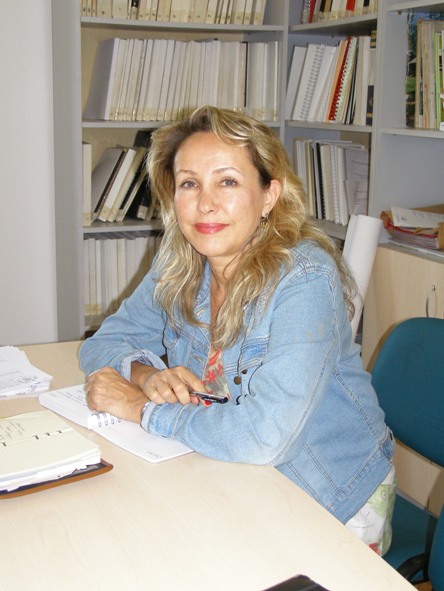
Prof. Dr. Ayşe Sema Kubat
Faculty of Architecture, department of Urban and Regional Planningt
Istanbul Technical University
Title: EXPLORING THE FRINGE BELT PHENOMENON IN THE CASE OF ISTANBUL
Urban Fringe belts are substantial morphological elements that enable the interpretation of the physical forms of urban areas, urban growth and transformation. Morphologists and geographers have studied the urban fringe belt concept since the 1960s. From the late 1990s, there has been a rising interest in the concept of the urban fringe belt in the literature of both urban planning and urban design, and fringe belts continue to have an increasing significance for urban ecology and sustainable development. For a better understanding of the effects of different planning policies on these areas, it is essential to realize that their locations and functions contribute to the city. Fringe belts have importance for ecological sustainability as they are usually comprised of urban heritage sites, ecological corridors and buffer zones that protect natural areas from the negative effects of the city. However, due to population increases and the need for new development plots, inner fringe belt areas in particular have become new development areas, and this has triggered the fringe belt alienation process.
In this presentation, a fringe belt development and transformation model for Istanbul is proposed for the former capital city of Turkey, which is related to its historical development. The findings and the results of a preliminary study of fringe belts of Istanbul with a specific focus on the inner fringe belt, formed with the fixation effect of the Theodosian Land walls and the conservation of this unique character which should be considered as a priority, will be explained. Fringe belt formation, transformation and alienation cycles are determined according to economic stagnation periods. Fringe belt alienation, in relation to fringe belt development in general and more specifically to that occurring along the old city walls, is considered to be a problem created by the historical development of Istanbul and an insight will be proposed for understanding the fringe belt development and the structural transformation of Istanbul.
Key Words:
Urban fringe belt, urban morphology, urban planning, urban design, Istanbul
TBA